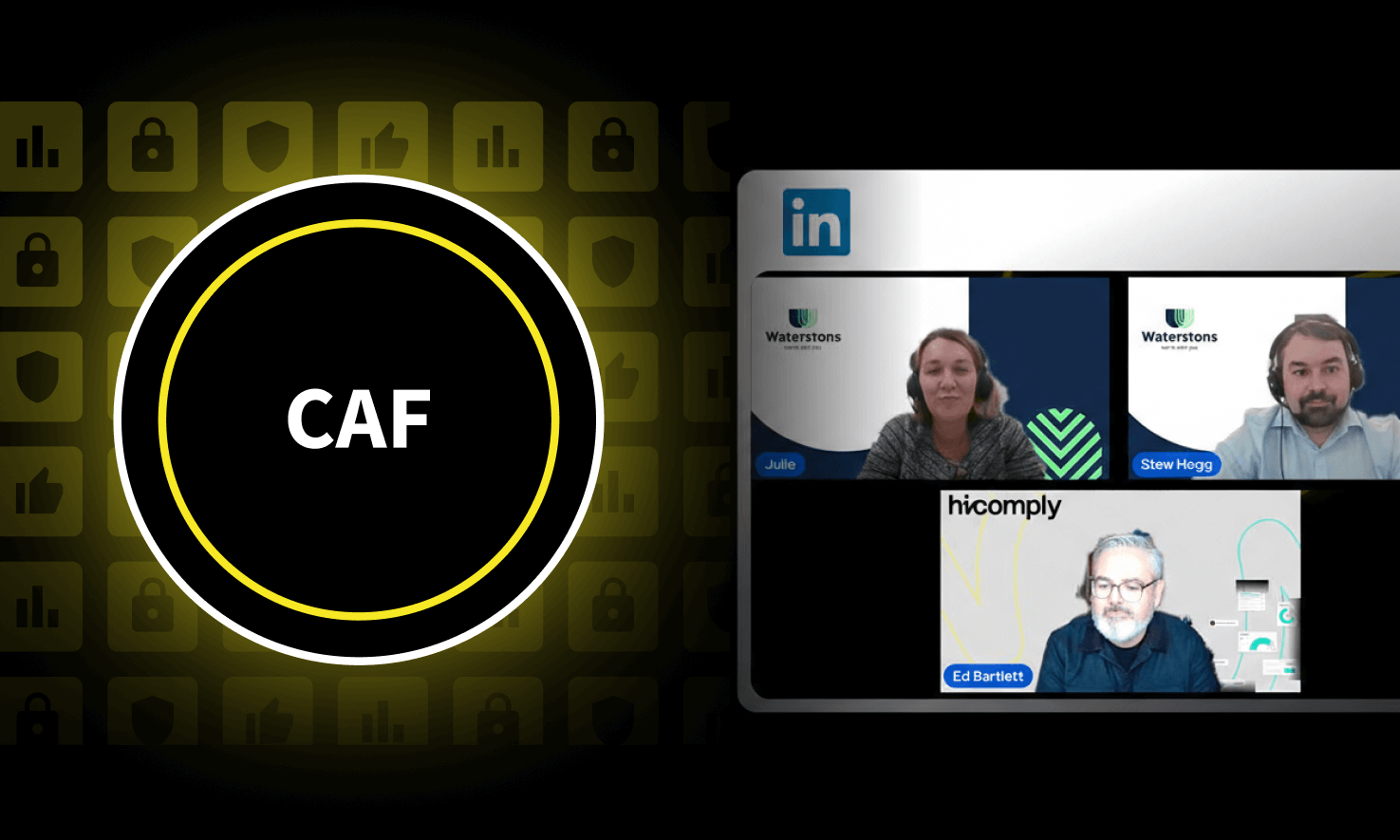If you work in fintech, you’ll reach a point where SOC 2 vs PCI DSS becomes an unavoidable conversation.
Both frameworks are designed to protect data. Both involve audits. And both play a key role in building trust with customers and partners.
But they’re not interchangeable. SOC 2 and PCI DSS protect different types of sensitive data, and choosing the right one at the right time can save you months of unnecessary work.
We've supported many fintech teams through this decision — and just as many who’ve had to unwind the wrong one. The difference always comes down to clarity: knowing what each framework demands, who it’s for, and how it fits into your broader compliance journey.
So, let’s start there — a clear look at what SOC 2 and PCI DSS actually cover, their key differences, and how to decide which your business needs first.
SOC 2 vs PCI DSS: The short version
- SOC 2 is a voluntary information security standard created by the American Institute of Certified Public Accountants (AICPA). It proves your security controls, internal controls, and organisation controls protect sensitive customer data.
- PCI DSS (Payment Card Industry Data Security Standard) is a mandatory framework maintained by the PCI Security Standards Council — a group of major credit card companies — to protect cardholder data and ensure secure credit card transactions.
In other words:
- SOC 2 = build trust with customers.
- PCI DSS = keep your ability to accept credit card payments.
They overlap by about 60%, but they’re built for different purposes — and understanding who each one serves will save you a lot of unnecessary work later.
What is SOC 2?
SOC 2 (System and Organisation Controls 2) is a report that assesses how well a company protects and manages customer data under five Trust Services Criteria:
- Security
- Availability
- Processing Integrity
- Confidentiality
- Privacy
It’s conducted by certified public accountants (CPAs) and is typically voluntary — but in fintech, “voluntary” quickly becomes “expected.”
SOC 2 reports demonstrate your information security management systems and risk management processes are sound. They prove your security measures and privacy controls are designed and operating effectively.
It’s less of a strict checklist and more of a story about how your security posture protects sensitive information and maintains operating effectiveness over time.
What is PCI DSS?
The Payment Card Industry Data Security Standard (PCI DSS) is an industry data security standard maintained by the PCI Security Standards Council (PCI SSC) — formed by Visa, Mastercard, AmEx, Discover, and JCB.
It’s mandatory for any business that stores, processes, or transmits credit card information.
The goal? To protect payment data from theft, fraud, and data breaches across its entire lifecycle.
PCI DSS compliance involves:
- Building and maintaining secure systems and networks
- Implementing strong access control measures
- Regularly testing and monitoring security systems
- Maintaining a vulnerability management program
- Protecting cardholder data at rest and in transit
- Conducting annual PCI DSS assessments via a Qualified Security Assessor (QSA)
If your app, gateway, or backend touches payment card data or primary account numbers (PANs), PCI DSS compliance isn’t optional — it’s contractual.
SOC 2 vs PCI DSS: Key differences at a glance
The key difference: Type of data protected
This is where some fintech teams trip up.
Both frameworks aim to protect sensitive data, but they cover different types:
- SOC 2 protects customer data, including operational and personally identifiable information.
- PCI DSS protects credit card data, specifically the primary account number (PAN) and other payment data.
Think of SOC 2 as securing your whole house. PCI DSS is securing the safe inside the house.
Why most fintechs start with SOC 2
For fintechs targeting the US market, SOC 2 is often the first major compliance milestone — it’s what American investors and enterprise customers expect.
Here’s why:
- It’s broader, covering your company’s overall information security, risk assessment process, and data protection practices.
- It’s voluntary, but most B2B customers expect it — especially if you’re a service organisation handling sensitive customer data or running on the cloud.
- It’s easier to automate and maintain using modern compliance frameworks and tools.
SOC 2 helps you build internal controls, create an ongoing risk management culture, and prepare for tougher frameworks like PCI DSS.
A strong SOC 2 foundation means your systems already address information security, access control, vulnerability management, and incident response — all of which you’ll reuse when pursuing PCI DSS.
When PCI DSS comes into play
Once your fintech starts processing or transmitting credit card payments, it’s time for PCI DSS.
That means:
- You handle payment card industry data.
- You store or transmit cardholder data.
- You connect to systems that process credit card transactions.
At that point, the PCI DSS requirements kick in — and non-compliance can result in hefty penalties, reputation damage, or even losing the right to process payments.
PCI DSS audits are conducted by Qualified Security Assessors (QSAs), certified by the PCI Security Standards Council. They’ll review everything from your network security to physical access controls and vulnerability management program.
You’ll need to regularly monitor, test security systems, and maintain a secure environment year-round.
How SOC 2 and PCI DSS overlap
Roughly 60% of SOC 2 and PCI DSS requirements align, especially around:
- Access control and authentication
- Continuous monitoring
- Security training
- Incident response plans
- Third-party vendor management
- Encryption and data protection
This overlap means you can reuse evidence, policies, and security measures across both frameworks.
Combining PCI DSS and SOC 2 audits can even cut audit timelines from 12 months to around 3–8 months, and reduce costs by up to 30%.
Platforms like Hicomply make this possible by mapping shared controls across frameworks — eliminating duplication and giving you continuous compliance without twice the effort.
Common fintech compliance mistakes
- Treating SOC 2 and PCI DSS as identical
They both protect sensitive data, but PCI DSS is laser-focused on credit card data, while SOC 2 covers all sensitive customer data. - Skipping the risk assessment process
Both frameworks expect an ongoing risk assessment and vulnerability management approach. One-time assessments won’t cut it. - Ignoring security awareness training
Compliance isn’t just tech — it’s people. Regular security training prevents security incidents and data breaches. - Manual evidence collection
Nothing tanks an audit faster than spreadsheet chaos. Automate evidence collection and ongoing monitoring using information security management systems. - Forgetting physical security
SOC 2 and PCI DSS both require physical access controls — yes, that server room still counts.
SOC 2 and PCI DSS: Two halves of your security ecosystem
Both frameworks help fintechs build a secure environment and prove credibility.
The difference lies in why you need them.
- SOC 2 = customer trust and organisation controls report
- PCI DSS = card industry data security and regulatory protection
Together, they demonstrate your fintech’s maturity and ability to protect sensitive information from evolving security threats.
When combined with other frameworks like ISO 27001 or the NIST Cybersecurity Framework, you’re not just compliant — you’re bulletproof.
Building both frameworks smarter, not harder
Modern fintech teams are ditching manual checklists in favour of automation.
Using a compliance automation platform like Hicomply lets you:
- Map controls between SOC 2 and PCI DSS automatically
- Maintain continuous monitoring and evidence collection
- Track your risk management progress in real time
- Prepare for auditor reviews with minimal manual effort
The result? A secure environment, audit readiness on autopilot, and a team that doesn’t dread compliance season.
Because compliance shouldn’t derail your roadmap — it should power your growth.
Real talk: What to prioritise today
If you’re handling customer data but not cardholder data, start with SOC 2. It builds the foundation — your controls, your processes, your proof of trust.
If you’re processing credit card transactions, transmitting cardholder data, or storing payment data, then PCI DSS isn’t optional. It’s the standard that keeps you in business.
The good news? Doing both doesn’t have to mean doing double. With the right systems in place — shared controls, automation, and continuous monitoring — you can align SOC 2 and PCI DSS compliance side by side. It’s faster, cleaner, and far less painful than managing them in isolation.
Talk to us about multi-framework compliance
If you’re weighing SOC 2 vs PCI DSS — or wondering how to balance both — we can help you simplify it.
At Hicomply we help fintech streamline SOC 2 and PCI DSS compliance, map controls across frameworks, and keep audits stress-free with automation that actually works.




.png)
.png)
